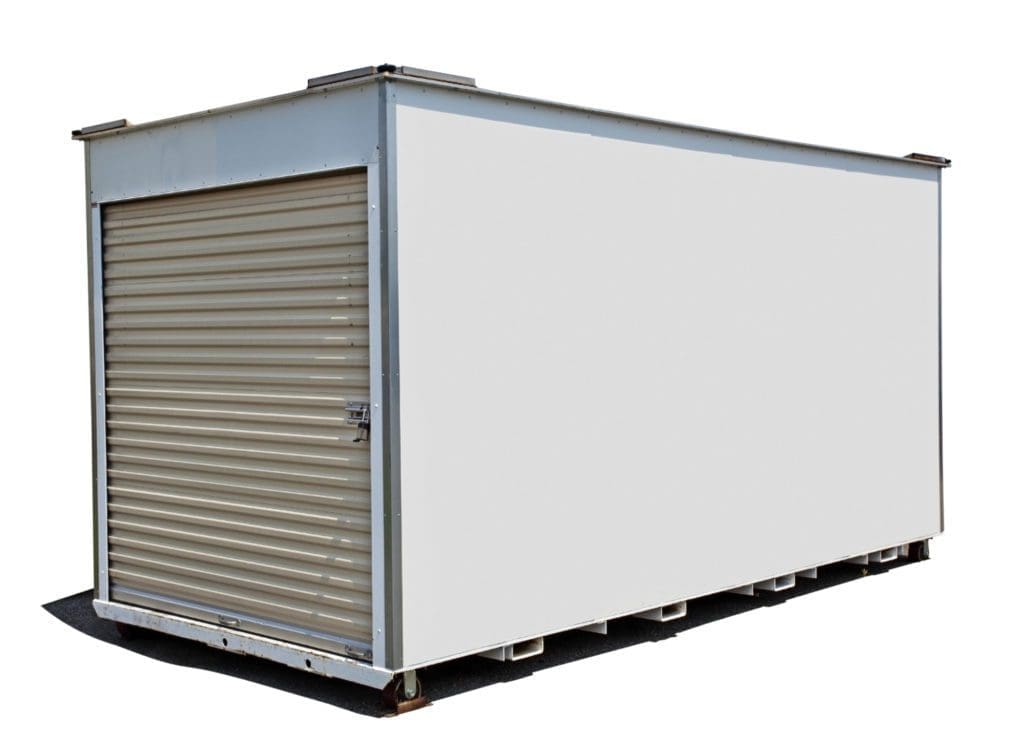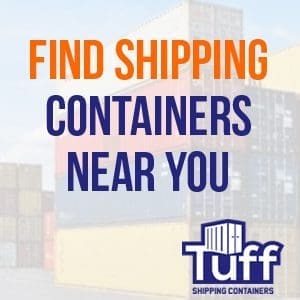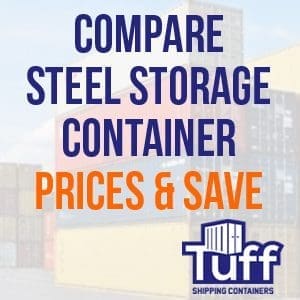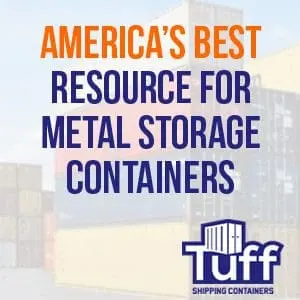
Comparing Prices for New vs. Used Steel Portable Storage Containers
Steel portable storage containers are incredibly versatile and valuable for various applications, from construction sites and industrial use to residential storage and moving needs. When considering investing in a storage container, one of the primary decisions you’ll need to make is whether to purchase a new or used container. Both options have their advantages and disadvantages, and the prices can vary significantly. This comprehensive guide will delve into the factors that influence the cost of new and used steel portable storage containers, comparing the benefits and drawbacks of each to help you make an informed decision.
Understanding Steel Portable Storage Containers
Steel portable storage containers, also known as shipping containers, are large, standardized containers made of steel designed to withstand harsh conditions during transport and storage. They are typically available in sizes ranging from 10 to 40 feet in length, with the most common being the 20-foot and 40-foot containers. These containers are used for various purposes, including:
- Shipping and Transport: Used for transporting goods across oceans, railways, and roads.
- Storage: Ideal for on-site storage of tools, equipment, inventory, and personal belongings.
- Modular Buildings: Converted into offices, homes, classrooms, and other structures.

Factors Influencing the Price of Steel Portable Storage Containers
Several factors influence the price of steel portable storage containers, whether new or used. Understanding these factors can help you better compare prices and determine the best option for your needs.
Size and Dimensions
The size of the container is one of the most significant factors affecting its price. Standard sizes include 10-foot, 20-foot, and 40-foot containers, with larger containers generally costing more. The height of the container can also impact the price, with high-cube containers (which are taller than standard containers) typically costing more due to the additional steel required.
Condition
The condition of the container is a crucial determinant of its price. New containers are typically more expensive than used ones because they are in pristine condition and have not been subjected to the wear and tear of transport and storage. Used containers, on the other hand, can vary widely in condition, from like-new to heavily worn and damaged.
Age
The age of the container is closely related to its condition. New containers are obviously the youngest, while used containers can range from a few years old to several decades old. Older containers are generally cheaper but may require more maintenance and repairs.
Modifications and Customizations
Containers can be customized with various modifications, such as adding doors, windows, insulation, electrical wiring, and HVAC systems. These modifications can significantly increase the cost of the container. New containers can be ordered with specific customizations, while used containers can be modified after purchase.

Market Demand
The demand for steel containers can fluctuate based on economic conditions, industry trends, and geographic location. High demand can drive up prices, while lower demand can lead to more competitive pricing. Understanding the current market trends can help you time your purchase to get the best price.
Delivery Costs
The cost of delivering the container to your site can vary depending on the distance from the supplier, the size of the container, and the delivery method. Larger containers and longer distances typically result in higher delivery costs. Some suppliers may include delivery in the purchase price, while others may charge it separately.
Comparing New vs. Used Steel Portable Storage Containers
To make an informed decision, it’s essential to compare the advantages and disadvantages of new and used steel portable storage containers. This comparison will help you understand which option best suits your needs and budget.
Advantages of New Steel Portable Storage Containers
- Pristine Condition: New containers are in excellent condition, free from rust, dents, and other damage. This ensures maximum durability and longevity.
- Customization: When purchasing a new container, you can often customize it to your specifications, including adding windows, doors, insulation, and other features.
- Compliance: New containers are built to meet the latest industry standards and regulations, ensuring they comply with current safety and environmental requirements.
- Aesthetics: New containers have a clean, uniform appearance, which can be important for businesses that want a professional look for their storage or office solutions.
- Warranty: Many new containers come with a manufacturer’s warranty, providing peace of mind and protection against defects.

Disadvantages of New Steel Portable Storage Containers
- Higher Cost: New containers are more expensive than used ones, which can be a significant drawback for budget-conscious buyers.
- Lead Time: Customizing a new container can take time, potentially delaying your project if you need the container immediately.
Advantages of Used Steel Portable Storage Containers
- Lower Cost: Used containers are generally more affordable than new ones, making them an attractive option for those on a tight budget.
- Immediate Availability: Used containers are often readily available, allowing for quick delivery and use.
- Eco-Friendly: Purchasing a used container is an environmentally friendly choice, as it repurposes existing materials and reduces the demand for new steel production.
Disadvantages of Used Steel Portable Storage Containers
- Variable Condition: The condition of used containers can vary widely, with some showing significant wear and tear. It’s essential to inspect used containers thoroughly before purchase.
- Limited Customization: While used containers can be modified, they may not offer the same level of customization as new containers.
- Potential for Repairs: Older containers may require more maintenance and repairs, which can add to the overall cost over time.

Price Comparison: New vs. Used Steel Portable Storage Containers
The price difference between new and used steel portable storage containers can be significant. Here’s a closer look at the typical price ranges for each:
New Steel Portable Storage Containers
- 10-Foot Container: $2,000 to $3,000
- 20-Foot Container: $3,000 to $5,000
- 40-Foot Container: $4,500 to $7,000
Used Steel Portable Storage Containers
- 10-Foot Container: $1,000 to $2,000
- 20-Foot Container: $1,500 to $3,000
- 40-Foot Container: $2,500 to $4,000
Additional Costs to Consider
In addition to the base price of the container, several additional costs can impact your overall investment:
- Delivery: Depending on the distance and size of the container, delivery costs can range from a few hundred to several thousand dollars.
- Modifications: Customizing your container with features such as doors, windows, insulation, and electrical wiring can add $500 to $5,000 or more to the total cost.
- Maintenance and Repairs: For used containers, budget for potential maintenance and repairs to address issues like rust, dents, and leaks.
- Permits and Inspections: Depending on your location and intended use, you may need permits and inspections, which can add to the cost.

Tips for Finding the Best Value
Finding the best value for steel portable storage containers involves more than just comparing prices. Here are some tips to help you make an informed decision:
Assess Your Needs
Start by clearly defining your needs and requirements. Consider factors such as the size of the container, its intended use, and any specific features or modifications you need. This will help you narrow down your options and ensure you choose a container that meets your needs.
Research Suppliers
Conduct thorough research to identify reputable suppliers. Look for companies with positive customer reviews and a track record of providing high-quality containers. Ask for recommendations from other businesses or industry associations.
Inspect Used Containers
If you’re considering a used container, it’s crucial to inspect it thoroughly before purchase. Look for signs of rust, dents, and other damage. Check the doors and seals to ensure they are in good working condition. If possible, inspect the interior for any signs of leaks or structural issues.
Compare Quotes
Request quotes from multiple suppliers and compare the total cost, including the base price of the container, delivery, and any additional fees. Be sure to compare apples to apples by ensuring the quotes include the same specifications and features.
Consider Long-Term Costs
While used containers are generally cheaper upfront, they may require more maintenance and repairs over time. Consider the long-term costs, including potential maintenance and repair expenses, when comparing new and used containers.

Negotiate
Don’t be afraid to negotiate with suppliers. Many are willing to offer discounts or additional services, such as free delivery or customization, to secure your business. Be prepared to walk away if the supplier is unwilling to meet your needs or budget.
Check for Warranties
If you’re purchasing a new container, check for any warranties offered by the manufacturer. A warranty can provide peace of mind and protection against defects or issues that may arise after purchase.
Consider Financing Options
If the upfront cost of a new container is a concern, explore financing options. Some suppliers offer financing plans that allow you to spread the cost over time. Additionally, leasing options may be available if you need the container for a temporary period.
Evaluate Customization Needs
If you require specific customizations, such as additional doors, windows, insulation, or electrical wiring, factor these into your decision. New containers can often be customized to your exact specifications, while used containers may require modifications after purchase.
Look for Discounts and Promotions
Keep an eye out for discounts and promotions offered by suppliers. Some companies offer seasonal sales, bulk discounts, or special promotions that can help you save money on your purchase.
When comparing prices for new vs. used steel portable storage containers, it’s essential to consider both the upfront cost and the long-term value. New containers offer pristine condition, customization options, and compliance with current standards, but they come at a higher price. Used containers, on the other hand, are more affordable upfront but may require more maintenance and repairs over time.

Leave a Reply